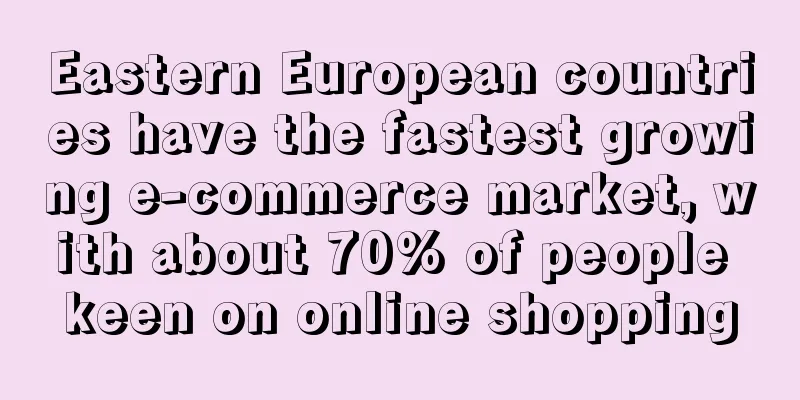Eastern European countries have the fastest growing e-commerce market, with about 70% of people keen on online shopping

|
Data from the 2020 European E-commerce Regional Report shows that the Western European market is still the most developed e-commerce market in Europe, accounting for 70% of the total European e-commerce, but the fastest growing e-commerce market is in Eastern Europe.
Data shows that the e-commerce markets in Bulgaria and Romania grew by an average of 30% in 2020, making them the fastest growing countries in Europe. Currently, the proportion of online shoppers in Romania is 31%, and in Bulgaria it is 29%.
According to statistics, Estonian online shoppers have the highest frequency of online shopping among Eastern European countries, with 76% of Internet users having shopped online at least once. In Latvia, the figure is 63%, while in Lithuania it is 64%.
According to LSM.LV statistics, 19% of Latvian Internet users have purchased goods once or twice within three months, and 12% of them have purchased five times. In the past three months, the categories with the highest sales on Latvian online platforms were clothing and footwear. Among them, 45% of Latvian netizens bought these products. Young people under the age of 25 are the main orderers of clothing and footwear. At the same time, data shows that Latvian residents tend to buy entertainment-related products online.
Another Eastern European e-commerce market country that cannot be ignored is Ukraine. With a population of more than 42 million, Ukraine has become the second fastest growing country in Europe in terms of e-commerce growth. As Ukraine's Internet penetration rate continues to increase (currently 44%), it will also become the leading country in the development of e-commerce in the Eastern European market.
At present, the Eastern European e-commerce market is dominated by international platforms such as AliExpress, Amazon and eBay, which are popular among local consumers. In addition, local online sales platforms in various countries also have a relatively loyal customer base. Relevant data shows that 53% of Internet users use domestic online platforms, such as Ukraine's largest e-commerce platform Rozetka.com.ua and Prom.ua.
Data from Ukrainian e-commerce platforms show that the most popular product categories have long been dominated by fashion and accessories, followed by electronic products and household products, as well as sports and entertainment supplies and personal care and beauty products.
According to the Euranet Plus 10 report, industry insiders said that online shopping is in the development stage in Eastern Europe, and more and more citizens and businesses will begin to try and adapt to this shopping model, and this trend is likely to continue.
Eastern Europe Cross-border e-commerce market |
Recommend
What is Orange Going Global? Orange Going Global Review, Features
Chengyi Overseas (Chenghui Shanghai Network Techno...
Amazon's sales hosting plan faces closure due to suspected antitrust
According to foreign media reports, Amazon may so...
What is 11 Honore? 11 Honore Review, Features
11 Honore is an apparel e-commerce platform. About...
What is 4KMILES? 4KMILES Review, Features
4KMILES (Four Thousand Miles) is a one-stop and e...
What is Collmex? Collmex Review, Features
Collmex provides integrated software for small bu...
Win! Shenzhen cross-border company received two more rounds of financing
In recent years, the robotics sector has continue...
Crazy sales of 8 billion! Shanghai's big sellers made a fortune in the niche market
Every spring, the demand for gardening tools and ...
Empty building! A service provider in Shenzhen is suspected of running away, and the seller went to the door to defend his rights...
Some time ago, the revocation of more than 15,000...
What is B2Marketplace Analytics? B2Marketplace Analytics Review, Features
<span data-docs-delta="[[20,{"gallery"...
Hot! Hot! 4.6 million views, this dress is trending on Twitter
Recently, Dolly Parton, a famous American country...
A Chinese company has been sued twice in a row, and this trademark can no longer be used!
On January 30 and January 31, a Chinese jewelry c...
With 19 million downloads, Temu has established itself in this European country
After its success in the United States, Temu has ...
Remove warning! Amazon sellers must submit this certificate before October 18
Today ( September 21), Amazon US issued an announ...
This Alibaba International Station merchant wants to "extinguish candles" in Africa
When talking about the "Candle Extinguisher&...
Orders are in a hurry! Amazon's front desk crashed again
At 2 a.m. today , a seller reported that the Amaz...









